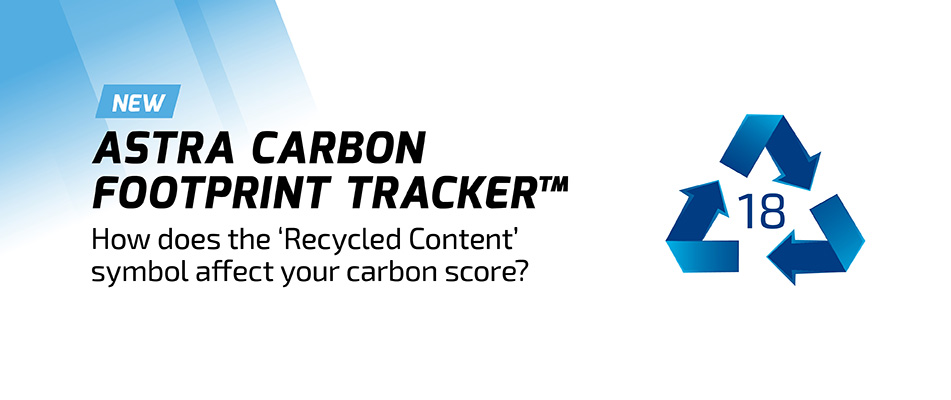Breaking Down the ‘Recycled Content’ Symbol - Recycling %’s for Astra Street Furniture

Earlier this month we launched our unique ecological ranking system - the Astra Carbon Footprint Tracker, and we posted a summary article on what each symbol means. However, to give you a deeper understanding of this system we wanted to break it down further to explain how we came up with the scores and rankings for the different products in our range!
The first category that we are going to break down in detail is ‘Recycled Content’, which is depicted by the blue recycled triangle symbol with a number in the centre.
Most products would have a certain amount of recycled content in it. Obviously the higher the percentage is the better, because we are not generating more waste in creating new products from scratch and completely discarding the old product, but rather using this old product to create something new. According to the Australian Bureau of Statistics’ November 2020 report, Australia generated 76 million tonnes of waste in the 2018-19 FY, a 10% increase on 2 years prior!!
By working closely with our Australian manufacturers as well as industry obligations and information, we were able to come up with a percentage score for each of our street furniture products so you are able to make informed purchasing decisions.
In general, below are the facts and statistics that we based our calculations on.
Waste categories with the highest recovery rate were:
- Masonry materials: 81%, driven entirely by recycling
- Metals: 76%, driven by exports and recycling (Steel 89%; aluminium 90%; stainless steel 90%)
- Paper and cardboard: 65%, driven mostly by recycling
While a high percentage of metals are recycled, limitations with material properties means that the percentages of recycled content present in Australian metals are:
- Steel 25%
- Extruded Aluminium 8%
- Cast Aluminium 15%
- Stainless Steel 60%
Waste categories with the lowest recovery rate were:
- Plastics: 13-15%, (high proportion sent to landfill)
- Textiles, leather and rubber: 26% (over 18 million tyres are recycled in Australia per year)
- Hazardous waste: 27%
With plastic waste, although the volume and percentage of total waste decreased, only about 13-15% was recovered, while 84% was sent to landfill.
Through the above statistics, you can see that recycling and using recycled materials to create new products plays a very important role in reducing landfill waste.
The good news is that in the 2021 NSW EPA report, 64% of NSW waste was diverted for recycling in the 2019-2020 financial year and there was a 43% decrease in litter volume which exceeded the 2013-14 target of 40% reduction.
According to CSIRO’s ‘National Circular Economy Roadmap Summary’, materials that are kept in circulation are valuable twice over: they reduce the need for virgin materials and reduce waste going to landfill. The less processing they need in the cycle, the more valuable they are.
Every piece of Astra Street Furniture is manufactured with recycled content. Although some products have a higher content percentage than others, having this scoring system allows you to purchase a variety of products with different scores and percentages in order to balance out the project and achieve a net zero result.


 Seating
Seating Benches
Benches  Curved Benches
Curved Benches Commercial Picnic Tables
Commercial Picnic Tables Concrete Plinth Mount Seating
Concrete Plinth Mount Seating Litter Bins
Litter Bins Bin Enclosures
Bin Enclosures  Shelters
Shelters Bike Parking
Bike Parking Architectural Bollards
Architectural Bollards Planter Boxes
Planter Boxes Skate Deterrents
Skate Deterrents  Drinking Fountains
Drinking Fountains Outdoor Classrooms
Outdoor Classrooms Athens Suite
Athens Suite Barcelona Suite
Barcelona Suite Berlin Suite
Berlin Suite Copenhagen Suite
Copenhagen Suite Dublin Suite
Dublin Suite Florence Suite
Florence Suite Glasgow Suite
Glasgow Suite Liverpool Suite
Liverpool Suite London Suite
London Suite Madrid Suite
Madrid Suite Manchester Suite
Manchester Suite  Milan Suite
Milan Suite Orbit Suite
Orbit Suite Paris Suite
Paris Suite Prague Suite
Prague Suite  Portsmouth Suite
Portsmouth Suite Rome Suite
Rome Suite Venice Suite
Venice Suite  Vienna Suite
Vienna Suite Woodville Suite
Woodville Suite School Furniture
School Furniture Healthcare Furniture
Healthcare Furniture Local Government Furniture
Local Government Furniture Park & Street Furniture
Park & Street Furniture Shopping Centre Furniture
Shopping Centre Furniture Aged Care Furniture
Aged Care Furniture